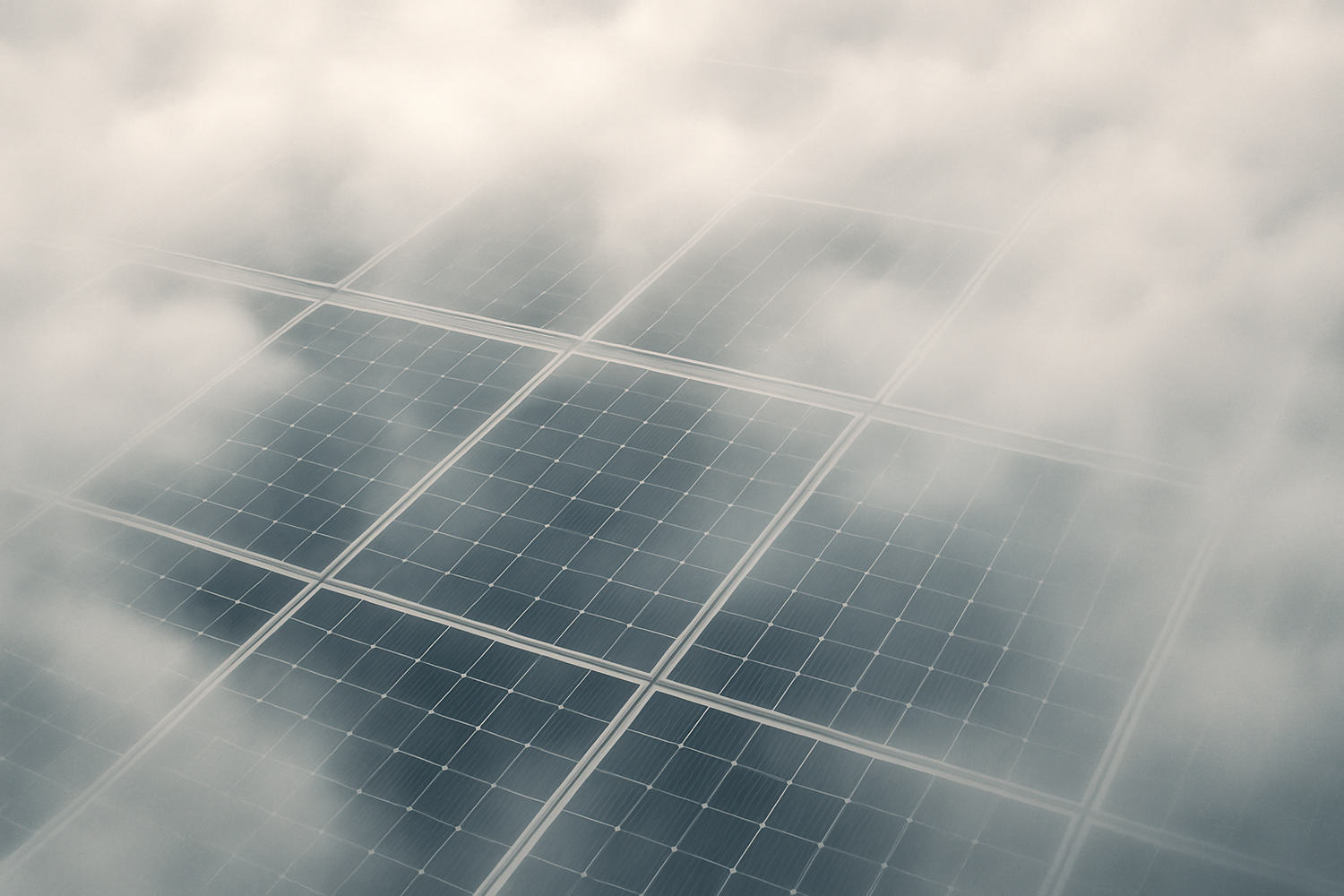Perspective: I write from a market-analytics lens—pairing PV performance data with finance-grade assumptions. In interconnection studies and storage modeling, we see cloudy-weather output materially impact charge speed, but never reduce it to zero. What matters is irradiance regime, electronics, and system sizing.
Executive Takeaways
- Cloud cover shifts irradiance from direct to diffuse; modules still operate, typically at ~10–40% of clear-sky under uniform overcast, with higher spikes during broken clouds due to edge-of-cloud effects.
- MPPT electronics, correct string voltage windows, and shading control often recover 10–30% more energy versus legacy PWM under variable light.
- Bankable designs plan for variability: array oversizing (DC/AC ratio), storage charge windows, and realistic P50/P90 assumptions.
Physics in Brief
PV cells require photons, not “sunshine” in the colloquial sense. Clouds scatter light; the diffuse component penetrates. Thermal conditions on cool overcast days can improve cell efficiency, partially offsetting reduced irradiance. Market data and integration studies (e.g., IEA system-integration work) show variability is manageable with standard forecasting and controls.
What Users Actually See on Cloudy Days
| Sky Condition | Typical Output vs. STC Nameplate | Charging Implication |
|---|---|---|
| Clear, cool | 80–100% | Fastest charging; inverter thermal limits may appear at high DC/AC. |
| Broken clouds | 20–70% with short peaks | Edge-of-cloud spikes; MPPT responsiveness is critical. |
| Uniform overcast | 10–40% | Steady but slower; temperature helps a little. |
| Heavy storm | 5–15% | Minimal but non-zero; plan to lean on storage. |
Design Moves That Keep Charging Fast
1) MPPT and Stringing
- Use MPPT charge controllers or hybrid inverters; tune Vmp range to keep the tracker in its optimal window during cool, low-irradiance conditions.
- Avoid mixed orientations on one MPPT; if unavoidable, allocate separate MPPT channels.
2) Array Sizing and DC/AC Ratio
- Modest DC oversizing (e.g., 1.2–1.5× inverter AC) improves capture in shoulder hours and overcast periods without breaching continuous AC limits.
- Match PV to the battery’s charge-acceptance curve so that intermittent surges are absorbed efficiently.
3) Storage Strategy
- Define a cloud buffer: enough usable kWh to cover expected deficits across 1–2 low-irradiance days.
- Schedule non-critical loads when irradiance probability is higher; reserve SOC headroom before a cloudy front.
4) Operations and Maintenance
- Keep modules clean; diffuse conditions are more sensitive to soiling losses because available irradiance is limited.
- Trim transient shading sources; partial shade and clouds together can trigger disproportionate string losses.
Myth vs. Reality
- Myth: “Clouds make panels useless.” Reality: Output typically persists at 10–40% under overcast; zero occurs only at night or in extreme occlusion.
- Myth: “Charge speed is fixed by panel watts.” Reality: Electronics and temperature shift power curves; MPPT can materially improve harvest on variable days.
Setting Expectations the Finance Way
When we build bankable cases, we model P50/P90 energy under historical cloud regimes and test charge windows against battery SOC targets. The goal is not “sunny-day speed” every day; it is meeting service levels across weather distributions.
References (authoritative)
- IEA — System Integration of Renewables
- NREL — Solar Irradiance & Diffuse/Direct Components
- NREL — Best Research-Cell Efficiencies (context)
Disclaimer: Informational only, not financial advice. Validate designs with a qualified installer and local interconnection requirements.





Leave a comment
All comments are moderated before being published.
This site is protected by hCaptcha and the hCaptcha Privacy Policy and Terms of Service apply.